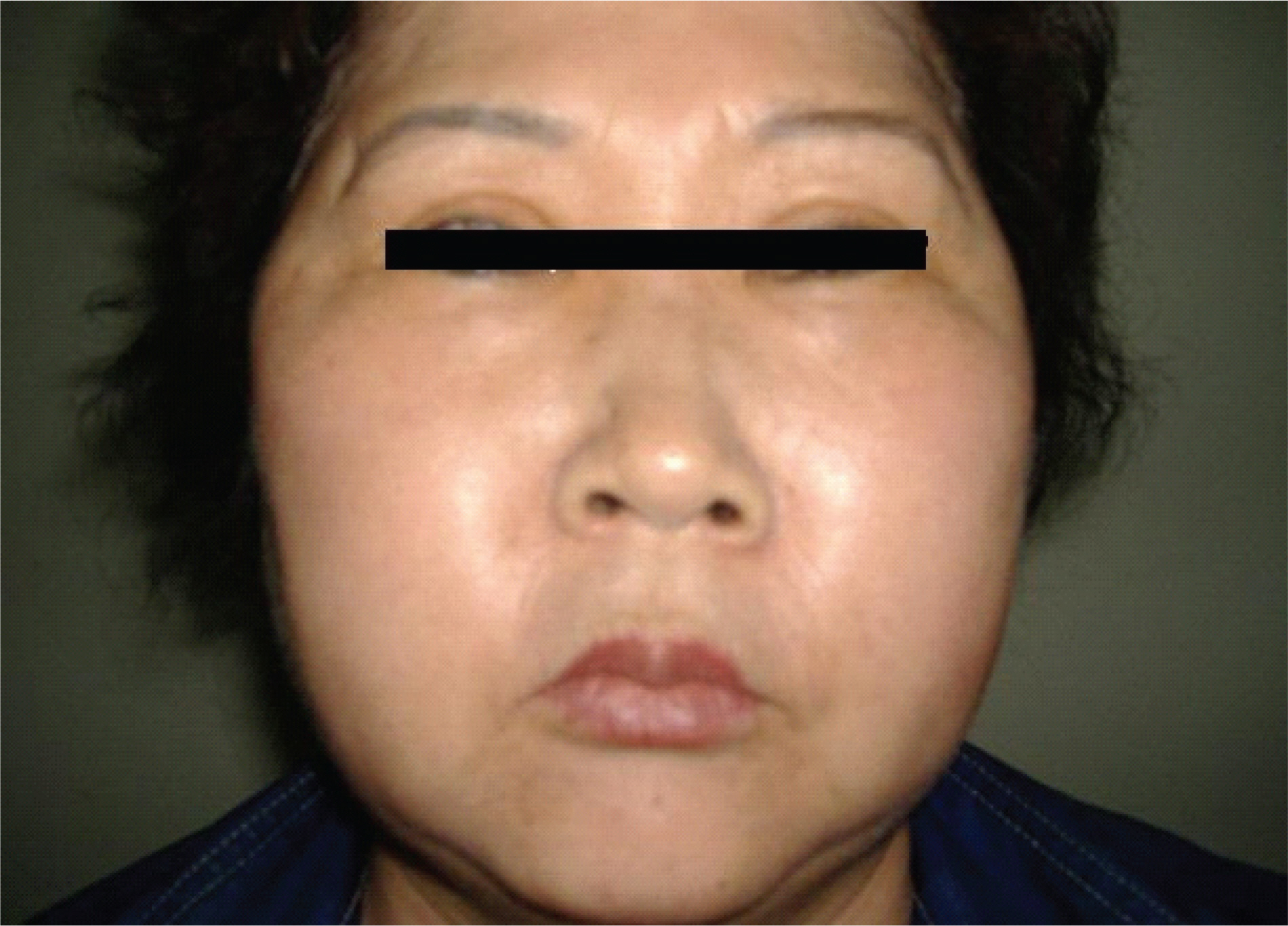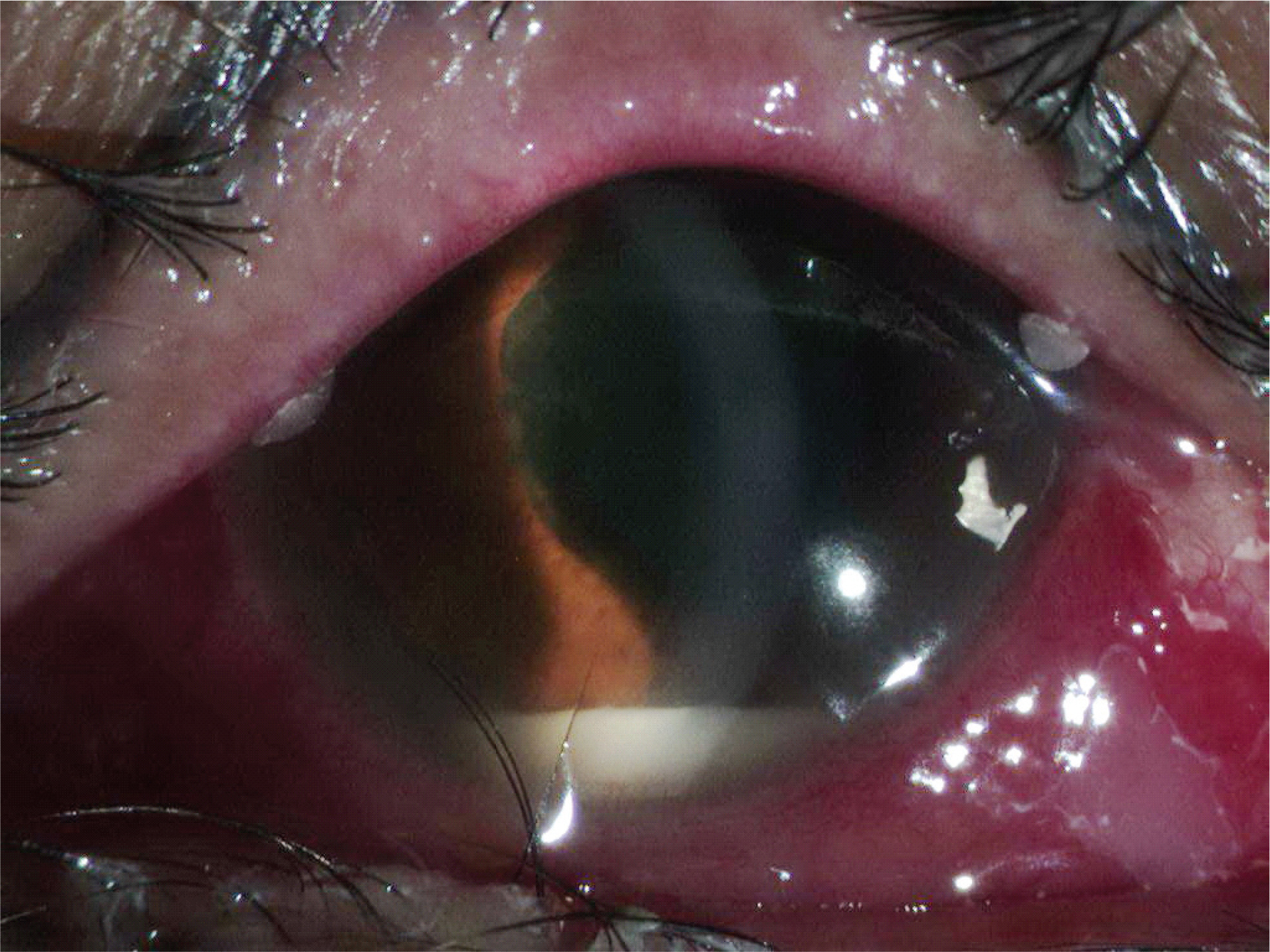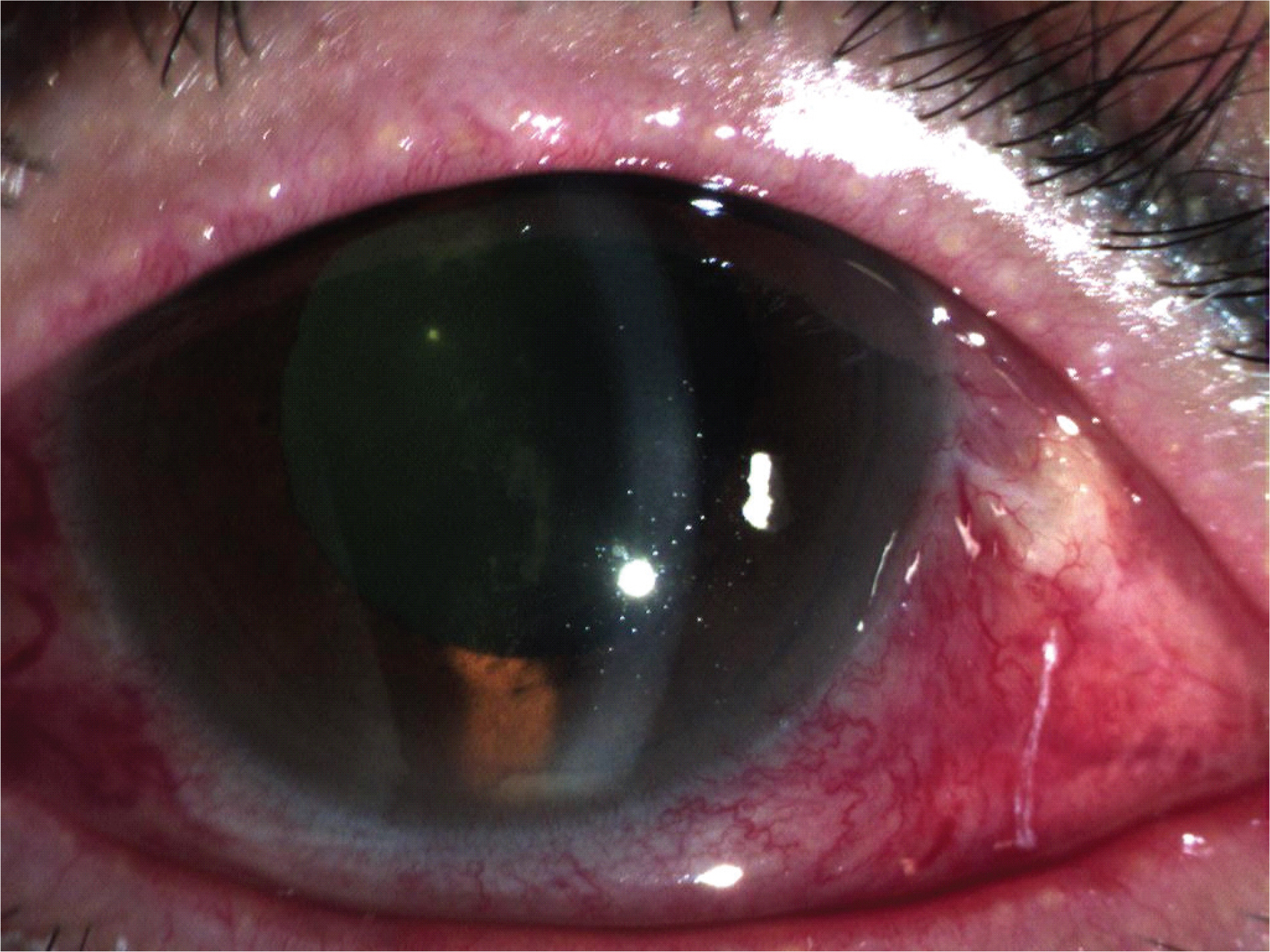J Korean Ophthalmol Soc.
2009 Mar;50(3):486-490. 10.3341/jkos.2009.50.3.486.
A Case of Hypopyon Uveitis Associated With Relapsing Polychondritis
- Affiliations
-
- 1Myung-Gok Eye Research Institute, Department of Ophthalmology, Konyang University, Kim's Eye Hospital, Seoul, Korea. han66139@kimeye.com
- KMID: 2111264
- DOI: http://doi.org/10.3341/jkos.2009.50.3.486
Abstract
-
PURPOSE: Relapsing polychondritis is an uncommon systemic autoimmune disorder which is characterized by recurrent and often progressive inflammatory episodes involving multiple organ systems, including the ophthalmic, otorhinolaryngeal, respiratory, musculoskeletal, renal, cardiovascular, and dermatologic systems. The most common ocular manifestations are episcleritis and scleritis. Uveitis, especially the nongranulomatous type, has been reported in 3% to 22% of relapsing polychondritis cases. We report uncommon hypopyon uveitis as an ophthalmic finding associated with relapsing polychondritis.
CASE SUMMARY
A 56-year-old woman with known relapsing polychondritis presented with ocular pain and redness in the right eye which had developed two months before and was managed for scleritis. However, she developed blurred vision, and hypopyon and vitreous opacity was found. The patient presented to our clinic and we diagnosed her with hypopyon uveitis associated with relapsing polychondritis. The patient was started on systemic steroid therapy consisting of 1% prednisolone acetate, 0.5% moxifloxacin, and 0.5% tobramycin in the right eye. Hypopyon disappeared 8 days following the initiation of treatment, and all symptoms had resolved after 14 days.
Keyword
MeSH Terms
Figure
Reference
-
References
1. Jaksch-Wartenhorst R. Polychondropatha. Wien Arch Med. 1923; 6:93–100.2. Isaak BL, Liesegang TJ, Michet CJ Jr. Ocular and systemicfindings in relapsing polychondritis. Ophthalmology. 1986; 93:681–9.3. McAdam LP, O'Hanlan MA, Bluestone R, Pearson CM. Relapsing polychondritis: prospective study of 23 patients and a review of the literature. Medicine (Baltimore). 1976; 55:193–215.4. Zeuner M, Straub RH, Rauh G, et al. Relapsing polychondritis: clinical and immunogenetic analysis of 62 patients. J Rheumatol. 1997; 24:96–101.5. Michet CJ, McKenna CH, Luthra HS, O'Fallon WM. Relapsing polychondritis. Survival and predictive role of early disease manifestations. Ann Intern Med. 1986; 104:74–8.6. Damiani JM, Levine HL. Relapsing polychondritis report of ten cases. Laryngoscope. 1979; 89:929–46.7. Person CM, Kline HM, Newcomer VD. Relapsing polychondritis. N Eng J Med. 1960; 263:51–8.8. Park JJ, Lee JC, Kim JH, et al. Clinical analysis of relapsing polychondritis: 16 Cases in Korea. J Korean Rheum Assoc. 2005; 12:213–21.9. Foidart JM, Shigeto A, Martin G, et al. Antibodies to typeII collagen in relapsing polychondritis. N Engl J Med. 1978; 299:1203–7.10. Lee KH, Hong YS, Kang HJ, et al. A case of relapsing polychondritis associated with Sjögren's syndrome. J Korean Rheum Assoc. 2001; 8:198–202.11. Letko E, Zafirakis P, Baltatzis S, Foster CS. Relapsing polychondritis: a clinical review. Semin Arthritis Rheum. 2002; 31:384–95.
Article12. Kim CM, KIM BS, Cho KJ, Hong SJ. Laryngotracheal involvement of relapsing polychondritis in a Korean girl. Pediatric Pulmonology. 2003; 35:314–7.
Article13. Anderson NG, Garcia-Valenzuela E, Martin DF. Hypopyon uveitis and relapsing polychondritis A Report of 2 Patients and Review of Autoimmune Hypopyon Uveitis. Ophthalmology. 2004; 111:1251–4.14. Choi YS, Yim HB, Kim KB. A case of episcleritis with relapsing polychondritis. J Korean Ophthalmol Soc. 2002; 43:626–30.15. Yim JS, Oum BS, Park D. A Case of Relapsing Polychondritis Complicated with Chorioretinitis without Scleritis. J Korean Ophthalmol Soc. 2007; 48:1716–22.
Article16. Joo SH, Choe JK. A Case of Posterior Scleritis Associated with Relapsing Polychondritis. J Korean Ophthalmol Soc. 1989; 30:665–70.17. Harper LS, Chorich LJ, Foster CS. Diagnosis of uveitis. Foster CS, Vitale AT, editors. Diagnosis and Treatment of Uveitis. 1st ed.Philadelphia: WB Saunders;2002. chap 6.18. Ramsay A, Lightman S. Hypopyon uveitis. Surv Ophthalmol. 2001; 46:1–18.
Article19. D'Alessandro LP, Forster DJ, Rao NA. Anterior uveitis and hypopyon. Am J Ophthalmol. 1991; 112:317–21.20. Chavis PS, Tabbara KF. Behc¸et's disease. Int Ophthalmol Clin. 1995; 35:43–67.
Article21. Firestein GS, Gruber HE, Weisman MH, et al. Mouth and genital ulcers with inflamed cartilage: MAGIC syndrome. Five patients with features of relapsing polychondritis and Behcet's disease. Am J Med. 1985; 79:65–72.22. Barranco VP, Minor DB, Soloman H. Relapsing polychondritis treated with dapsone. Arch Dermatol. 1976; 112:1272.
Article23. Barranco VP, Minor DB, Soloman H. Treatment of relapsing polychondritis with dapsone. Arch Dermatol. 1976; 112:1286–8.
Article24. Van der Lubbe PA, Miltenburg AM, Breedveld FC. Anti-CD4 monoclonal antibody for relapsing polychondritis. Lancet. 1991; 337:1349.
Article25. Choy EH, Chikanza IC, Kingsley GH, Panayi GS. Chimaeric anti-CD4 monoclonal antibody for relapsing polychondritis. Lancet. 1991; 338:450.
Article
- Full Text Links
- Actions
-
Cited
- CITED
-
- Close
- Share
- Similar articles
-
- A Case of Relapsing Polychondritis Associated with Ankylosing Spondylitis
- A Case of Relapsing Polychondritis
- A Case of Relapsing Polychondritis Complicated with Chorioretinitis without Scleritis
- A Case of Cutaneous Panniculitis in Relapsing Polychondritis
- A Case of Relapsing Polychondritis Presenting with Diffuse Tracheobronchial Involvement





